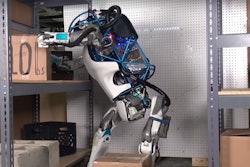The Massachusetts Institute of Technology researchers have created a new, ultrathin generation of solar cells that could potentially be attached to clothing, cellphones, balloons or even bubbles.
The cells are so light, “If you breathe too hard, you might blow it away,” says MIT doctoral student Joel Jean.
These flexible cells — the lightest and thinnest ever created — are two microns thick. For reference, that’s about one-fiftieth as thick as a human hair. And the cells are just as effective as their more rigid glass-based counterparts.
In fact, by weight, these ultra-lightweight cells are more efficient, producing about 6 watts of power per gram compared with the glass-based cells at about 15 watts per kilogram. That’s a 400 percent improvement, noted researchers.
It could be years before the cells are ready for a commercial market, but the proof-of-concept prototype used a new process to create the solar cells — which is the “key innovation,” according to MIT.
Instead of using abrasive chemicals and high heat and requiring separate cleaning and handling processes, the new approach “grows” the light-absorbing layer, substrate (the supportive surface) and protective overcoat in one process, called vapor deposition. This way, the contamination risk, which could reduce the cells’ efficiency, is significantly lower.
Vapor deposition uses a vacuum chamber to deposit the material, layer by layer, onto a carrier material. When the process is complete, the researchers used a thin and flexible frame to lift the completed call off of the carrier material.
“We put our carrier in a vacuum system, then we deposit everything else on top of it, and then peel the whole thing off,” research scientist Annie Wang simplifies.
In this case, the MIT group used parylene — often as a protective coating on circuit boards — as both substrate and overcoat and DBP as the light-absorbing layer.
“It could be so light[weight] that you don’t even know it’s there, on your shirt or on your notebook,” MIT professor Vladimir Bulović says. “These cells could simply be an add-on to existing structures.”
Although these ultrathin cells can be placed atop a bubble without popping it, they would likely be more commercially feasible at around 80 microns thick.
Where do you think these ultra-light solar cells could be most beneficial? Comment below or tweet @MNetKatie.






















